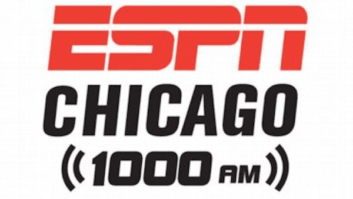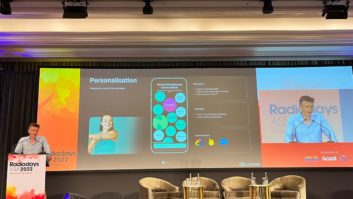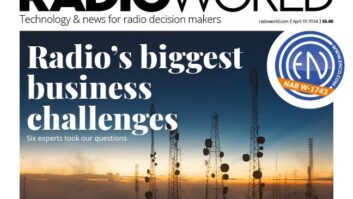
iStockphoto/Valerie Loiseleux Just about the time we finally warm to the fact that our audience is tuning in, along comes a new breed of listener with a smartphone in one hand, an iPad in the other, an eye on television, an ear to radio and a PC within arm’s reach.
The changing habits and new devices of today’s consumers are major game changers for radio broadcasters and other purveyors of advertising, who are looking to a new audience measurement project initiated by ESPN for answers.
Arguably the largest sports network around, with the broadest reach into all five platforms, ESPN has been studying multiplatform use for 12 years. In October, the network teamed up audience measurement pros Arbitron and ComScore to launch the first-ever five-platform audience measurement initiative.
Radio, ‘front and center’
Until now, cross-platform audience measurements from research companies like Nielsen largely have centered on television and online video use, with little if any measured consideration of radio use.
By enlisting Arbitron’s PPM technology and ComScore’s Internet and panel-measurement methods and technology, ESPN expects to gain insight into the behavior of its sports fans, who tend to be higher wage earners and loyal radio listeners as well as early adopters of new technology, according to Glenn Enoch, ESPN’s vice president of integrated research in New York.
“We’ve done different studies that indicate something like one-in-six minutes that people spend with ESPN, they spend on an ESPN radio affiliate. Radio is very big in sports, and it’s big for ESPN in a way that it is not for other content providers. For us, it’s front and center, and that’s why it was important that radio be one of the platforms we study here,” said Enoch.
The plan is to combine the tried and true measuring technologies of both companies, in order to arrive at overlapping behavior findings that will be useful to ESPN, and eventually to other content providers. They hope to discover how and when individuals are exposed to content while listening to the radio and using a smartphone or tablet at the same time (for example).
“We already know that they’re using iPhones and listening to radio,” Enoch said. “The tricky part is figuring out the duplicated audience across the platforms. How many people are watching TV and using a PC? How many are listening to radio and using their smartphones, but not their tablets? That’s the kind of measurement we don’t have and we hope to get from this.”
The trio finalized their partnership during Advertising Week in New York.
ComScore brings to the table critical Web data points and demographic information taken from the browsing and transaction behavior of approximately 2 million opt-in Internet users on PCs, mobile devices and TV set-top boxes. Arbitron brings to the table its “Portable People Meter” technology, covering some 70,000 opt-in people across the country.
For its part, ESPN contributes some 110 million weekly sports fans who reach across video, audio and display content on TV, as well as online and mobile video, PC web, mobile Web, apps, tablets, digital audio and radio.
“We’re watching this very closely, because it’s the first initiative that has to do with unduplicated reach and frequency on a big scale,” said Jane Clarke, managing director for the Coalition for Innovative Media Measurement in New York, a group of content providers and media agencies formed in 2009 to foster new media measurement technologies and methods.
She says the media industry has embraced multiplatform use as the new normal, citing one important initiative known as Touchpoints, now being used by Katz and other media buyers as an integrated channel-planning tool. But what has been lacking is a way to measure cross-platform usage of individuals, or what Clarke calls a single-source, multiscreen measurement.
Forming ‘touch points’
Explained Clarke, “This particular area of cross-platform research is really important because it’s understanding how an exposure to an ad or content occurred across all these platforms in an unduplicated way. So for a certain number of impressions for an ad, was it the same person that saw that ad a number of times across all platforms? Or, was it unique people across all those platforms that saw that ad?”
Of interest are 31 different consumer behaviors — 31 represents the number of circles drawn for each platform as well as their overlapping circles as they relate to each other.
Both Arbitron and ComScore did similar, yet separate, research on a much smaller scale under CIMM pilot studies. The ESPN/ComScore/Arbitron partnership up-sizes the scale and scope of research and adds the fifth platform: Radio.
The two companies play on each others’ strengths and weaknesses, too.
ComScore offers methodologies combining data received from its opt-in panelists with the server traffic data to get the scale needed for meaningful audience measurement. Arbitron’s PPM offers both an individual measure of media consumption, as well as a mobility aspect that is hard to replicate with other methods.
“Arbitron has been so innovative with their PPM. Without that whole footprint for radio, we wouldn’t be where we’re at with this,” said Clarke, who cited CNN, CBS and Univision as a few of CIMM’s members interested in the radio findings of the multiplatform study.
Initial findings from the five-platform study could be available for industry consideration and use as early as next year, with phase two expected to follow soon after. Phase two will broaden in scope to measure advertiser campaigns and eventually could be available as a syndicated model available to advertisers and advertising agencies.
“This is about forming touch points with sports fan throughout the day. Twenty years ago if you advertised on ESPN, you were basically reaching TV audiences, mostly at home,” said Enoch. “Now if you advertise on ESPN, you can reach fans the minute they get up in the morning to the moment they go to bed at night.”
Dee McVicker writes regularly for the broadcast industry.












